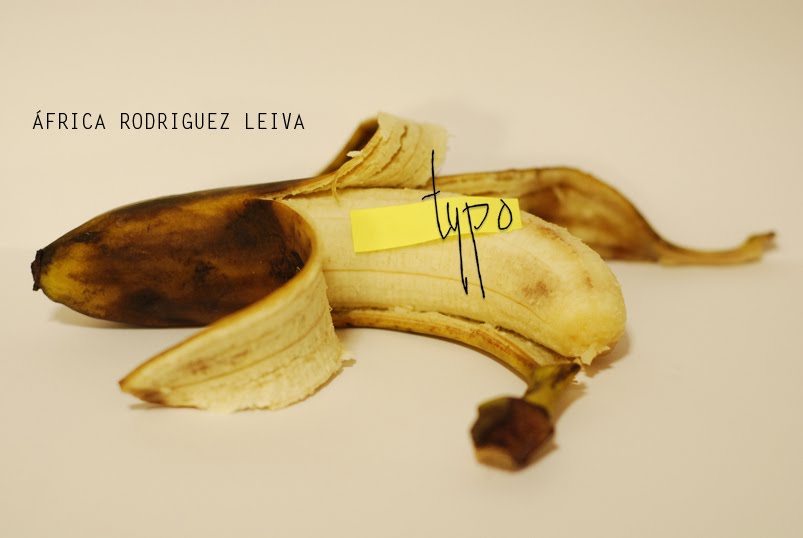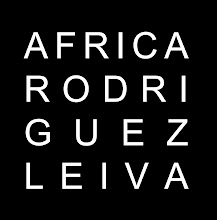miércoles, 15 de octubre de 2014
miércoles, 15 de enero de 2014
viernes, 26 de febrero de 2010
‘Typography in Contemporary Art and Viceversa’
‘Typography in Contemporary Art and Viceversa’
The theme I am about to develop in my essay is based on the use of typography in contemporary art, and in typography design art; and that is the reason why I have entitled my work as ‘Typography in Contemporary Art and Viceversa’. I think it is really clear and concise when it comes to focus on the topic.
To begin with, I would like to use as a reference the first apparitions of typography in art, by the hand of Braque (belonging to Cubism), Picasso and also Gris. I want to analyse the different typographies that have been used through the different stages of contemporary art. I would like to go into the works of some artists who work with typography but in different ways in depth.
First of all, I will be working on George Grosz, Jasper Johns, Mario Merz, Barbara Kruger, Ed Ruscha and Nancy Spero, among others, and avant-gardes such as Dadaism (Jean Arp) y the Bauhaus School.
With respect to the art in typography, I would like to analyse some of the most important typographies that we know, although not a large number. Define and compare between they.
‘The graphic design is also expressed through a third language, a very different one, I must say: the block letters, that is, typography, wich it belongs so clearly to graphic design, that its very presence in the printed paper surface is enough to distinguish the design of (or what could be) a work of art. We say that with reservations, given that, observed from this perspective, the History of Art is filled with words.’ E. Satué. ¹(Translated by me)
Taking this quotation as a reference, I think that this is an interesting idea about the difference between graphic design and art, and how typography is present in both cases.
This essay will be full of images of the works of art of the previously mentioned artist as well as from the collection of the typographies that I will analise.
I can say that it will be a very visual essay, due to the great ammount of pictures that I am including
¹ “ El diseño gráfico también se expresa con un tercer lenguaje, bien distinto por cierto: las letras de imprenta, es decir, la tipografía, que hasta tal punto pertenece que basta su presencia en la superficie de un papel impreso para distinguer enseguida un diseño de o que podría seruna obra de arte.
Decimos esto con todas las reservas, puesto que, observada desde esta perspectiva, la historia del arte está salpicada de letras.” (Satué 2007: 13) El arte en la Tipografía y tipografía en el arte: compendio de tipografía artística. (The art on typography and typography on the art: Compendium of artistic typography. Siruela, España.
Bibliography:
Elam,K. (1951) Expressive typography. The World as Image. New York Van Nostrand Reinhold
Geldzahler, H. (1969) New York painting and sculpture 1940 – 1970, The Pall Mall Press Ltd, London
Greenberg, A.C. (1979) Artist and Revolution, Dada and the Bauhaus, 1917- 1925. Ann Arbor, Michigan.
Carter, R. (1997) Experimental Typography , New York.
Satué,E. (2007) El arte en la Tipografía y tipografía en el arte: compendio de tipografía artística. (The art on typography and typography on the art: Compendium of artistic typography. Siruela, España.
Kate, L (1990) Love for sale: The words and pictures of Barbara Kruger. London: Harry N. Abrams
Ryan, D.(2001) Letter Perfect: The art of modernist typography, 1896 – 1953 . Rohnert Park, Calif; Fullbridge: Pomegranate.
Dood, E. Gordon, M. (1990) Decorative Typography. Oxford: Paidon
martes, 2 de febrero de 2010
typographic portrait



Buscando información en la web, encontré retratos hechos con tipografía. Hace meses, estuve pensando en ello para mi proyecto de grabado.. quién sabe?, alomejor todavía son una posibilidad... Son muy impactantes y dependiendo de la tipografía con la que se hacen son capaces de trasnmitir dferentes sensaciones. Por ejemplo, los retratos de Scarlett Johanson, con esa tipografía manual son muy naturales y sensuales, por otra parte, en los de Steven Paul Jobs no se puede sentir ningún tipo de sensualidad, es una imagen bastante fría y calculada, con muchos tamaños diferentes de fuente y siempre situados en el lugar correcto. Las dos imagenes están hechas con la misma técnica pero al mismo tiempo son totalmente distintas entre ellas.
lunes, 1 de febrero de 2010
Helvetica Vs Arial

Ironically, I have written this text with Arial..

Diferencias?
Helvética fue creada en 1957 por Max Miedinger y Eduard Hoffmann como la tipografía-manifiesto del Modernismo. Más tarde, en 1982 Robin Nicholas y Patricia Saunders crearon la Arial, que aparece desde 1990 en el paquete básico de TrueType para Internet y en Microsoft. Esta es la razón de que se haya convertido en una tipografía tan popular a lo largo del ancho mundo.
Ironic Sans ha creado un juego. Ha cogido algunos logos que originalmente fueron creados con Helvetica y los ha reconstruido con Arial. Eres capaz de acertar cuáles son los correctos?
Aun así, la Helvetica es la tipografía favorita de los diseñadores y está considerada como la mejor tipografía de todos los tiempos. Qué pensais al respecto?
Irónicamente, he escrito este texto con Arial..



